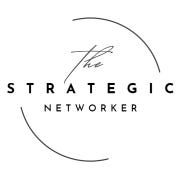In the past seven months since I'd shifted to London, I've been on the lookout for harvesting opportunities around me. I deliberately avoid using the term 'job hunt' here, as I sought to broaden my scope beyond traditional roles, exploring opportunities with VCs, startup incubators, part-time gigs, and more. Opportunity harvesting could even mean having genuinely interesting conversations with people you admire online. That was success, too.
In doing so, I applied to more than 296 companies, out of which I received 12 screening calls from recruiters, 6 interview rounds with companies, 2 final rounds, and one final offer letter.
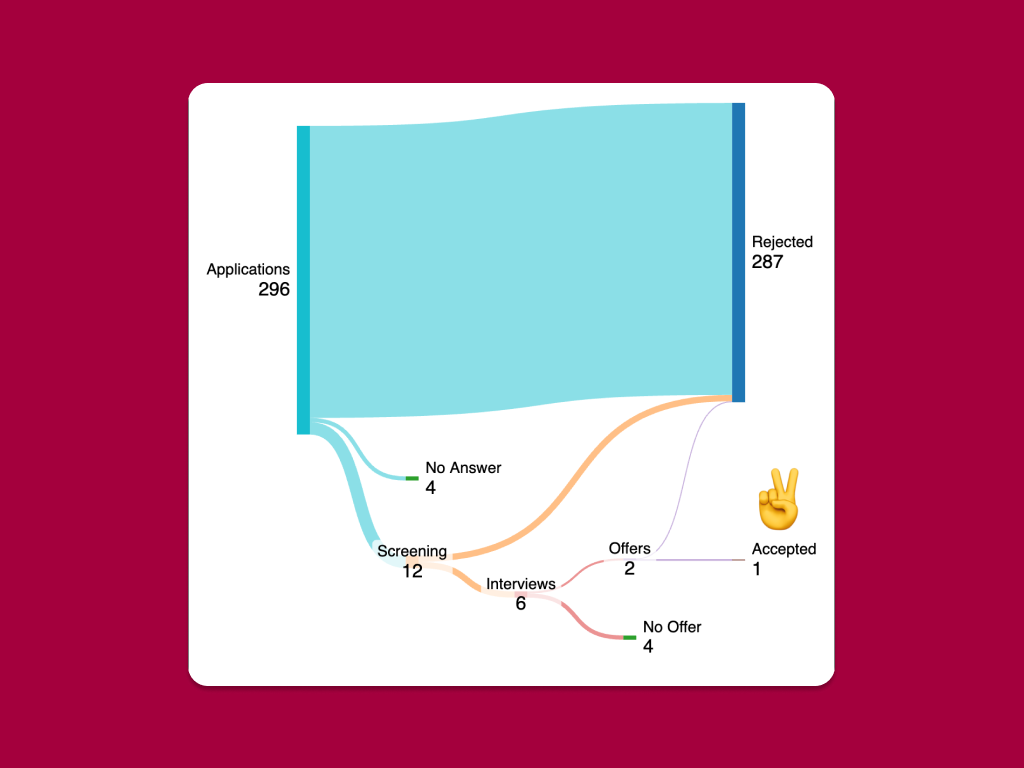
While applying for roles, I initially grappled with impostor syndrome—feeling inadequate 80% of the time, while spending the remaining 20% submitting applications, facing numerous rejections, and achieving a few successes. The conversion funnel was so lopsided that I lost hope multiple times. I made a promise to myself that once I secured an offer, I would try to give back as much as possible. Hopefully, someone else reading this might not repeat some of my own mistakes. This is an attempt to provide actionable advice to others navigating a similar path, in a way that scales.
While the basics are well-known, I’m here to share some of my own spicy takes on the opportunity search process—seeking to offer nuance which is missing from the sea of SEO-optimized job search blogs that, while coherent, can be incredibly dull.
Mastering the lingo.
Just as a scholar studying Michel Foucault must first grasp his unique vocabulary—terms like archaeology of knowledge, genealogy, biopower, and panopticism—before truly understanding his work, the same principle applies when preparing for a company interview. A company’s specific language, often reflected in their blogs, documentation or even TechCrunch news updates, provides insight into their culture and processes. I also listen to podcast episodes from the company execs to get an understanding of their language. For example, examining Flo Health’s blog can reveal key terminology and concepts that are integral to their operations. Familiarizing yourself with this lingo not only deepens your understanding but also creates an 'insider effect' while talking to them.
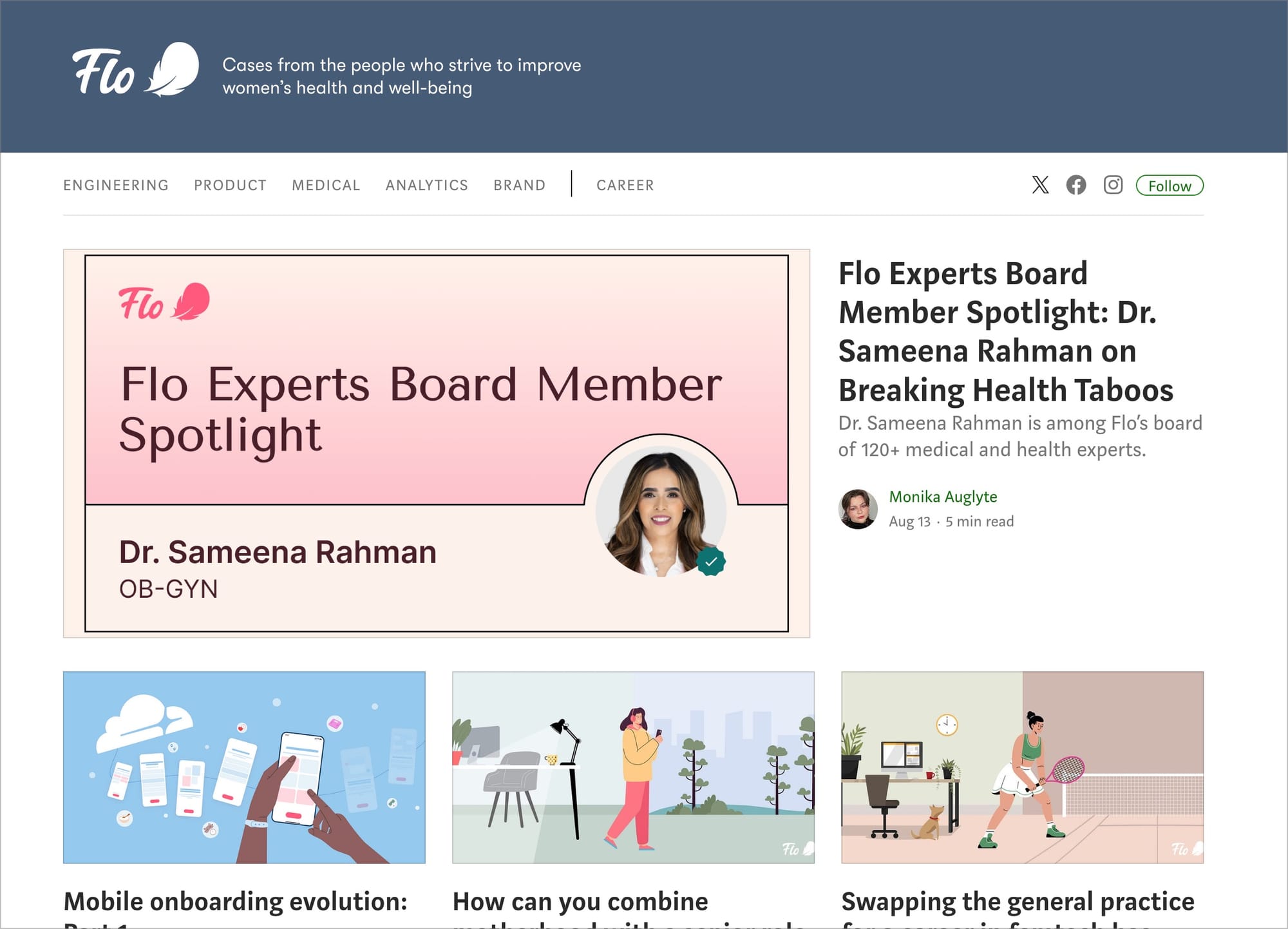
Consider upgrading to LinkedIn Premium
Premium offers a free trial for your first month, allowing you to explore its benefits risk-free. With Premium, you'll gain access to advanced search filters that help you precisely target companies and identify 2nd and 3rd-degree connections who can introduce you to hiring managers or provide referrals. Additionally, LinkedIn Premium helps you optimize your profile by aligning your skills with the specific keywords relevant to the roles you're pursuing. For example, as a Product Manager seeking B2B opportunities in healthcare, you can tailor your profile to match the exact requirements of the positions you're applying for. These preparatory steps are crucial to maximize your chances when applying for jobs on LinkedIn.
Optimising for interviews
My daily metric during my search was to get meetings, and not interviews. Once I arrived in London, my goal was to set up 3-5 meetings per week. Using personal connections and 2nd degree LinkedIn connections, I started to set up as many meetings as I could. The best sources of introductions were my graduate school network, friends from high school, friends from college, and friends from older jobs. Someone who knows someone who knows someone.
Writing fan mails to leaders.
A low hanging fruit here is to make first-contact with industry leaders. If there is a prominent leader who is writing various thought pieces, essays which are relevant to your interests, giving a thoughtful comment/opinion can be a good precursor for something big later on. I'm not suggesting to put pithy AI-driven comments such as 'Great article! Insightful read! etc..'. It should contribute to, or challenge the opinion shared by the leader. It should make them pause and think. I've built slow and steady relationships with product leaders such as Sasha Laundy, Derek Sivers etc in this way. These are slow burns, and might lead to opportunities eventually. You do it to genuinely connect with fascinating individuals, and karma blesses you in various other ways.
Always apply fresh.
When it comes to applying for job applications, there is always a 'hot' and 'cold' state. Ideally you should strike the iron when it's hot, and apply as soon as the application is open. In a market where talent is in surplus, the recruiters need not have to put in extra effort to find the cream of the candidates. My hunch here is that they might just look at the top half of the pile of applicants, find a few good candidates, and move on. If this is how it works, the first 3-4 days are the most crucial to get more visibility. Whenever I've applied two weeks after a job application was live, I've got fewer screening calls.
Simplify to auto-fill forms.
When you reach your 50th application, you realise how much of the job application process is manual. There are a lot of repeated entries that are routinely repeated again and again, such as your personal info, resume, cover letter, work links etc. Simplify helps you automate most of the routine pieces of your application so that you can focus on the most essential.
Dream 100.
You can approach your opportunity search from either a top-down or bottom-up perspective. A top-down search involves identifying your dream companies based on key criteria such as location, compensation, title, culture, and vision. Creating this list helps focus your efforts. It's also wise to regularly check the job boards of these companies, as there can be a time lag between when a position is posted on their careers page and when it appears on LinkedIn. In some occasions, I've used website monitoring tools such as Visualping to keep a close eye on the careers pages when there has been a change detected. I was able to capitalize on this delay and gain an edge on my applications. Crunchbase also have proprietary databases helping you narrow down this list further. I also screen companies from the portfolio companies of prominent VC firms to pick some for my Dream 100 list.
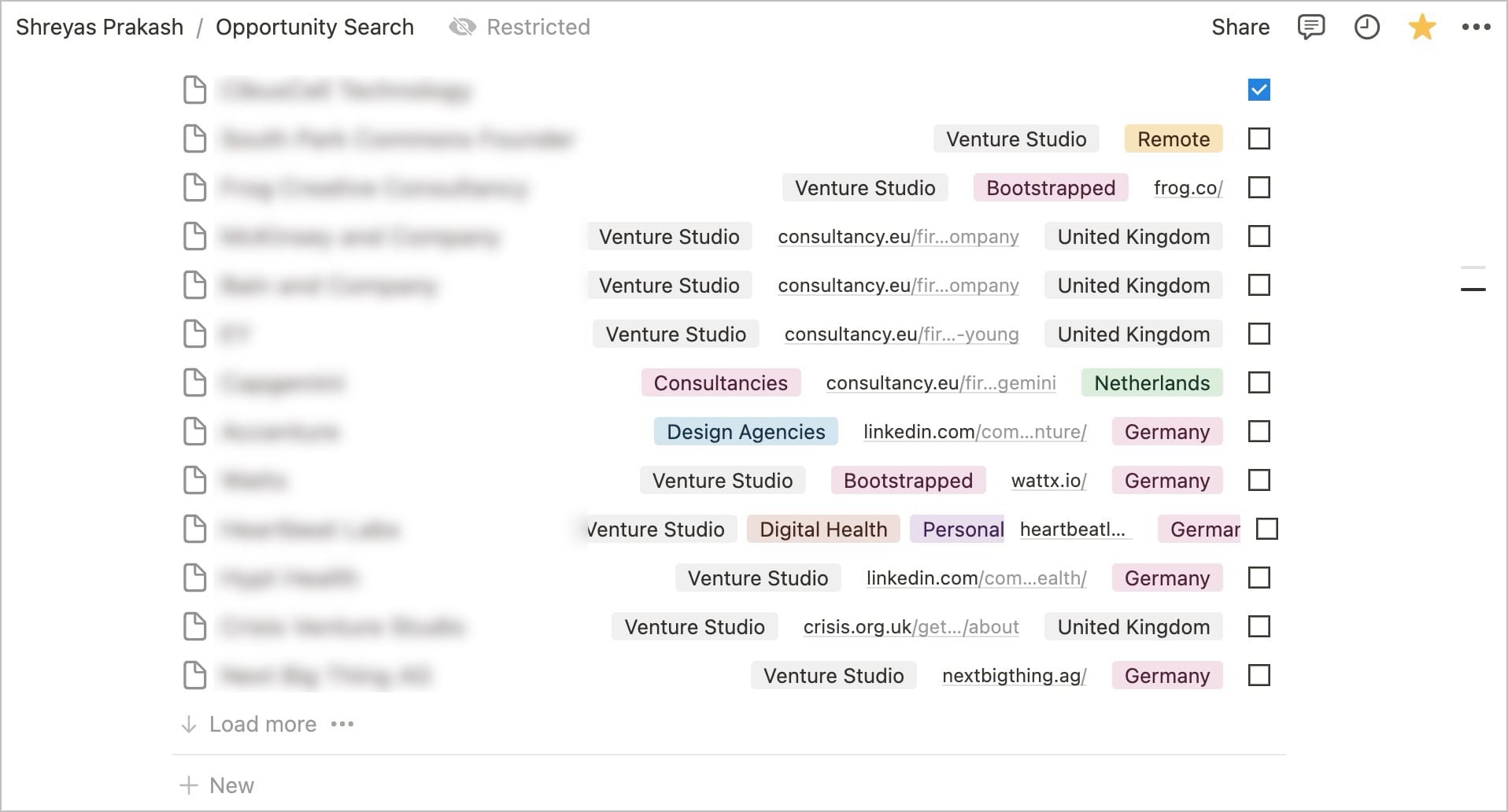
Never put a year to your education.
When it comes to quick screening, I've seen hiring managers quickly take a glance of the latest year of education, to back-calculate the number of years of experience an individual might have. This might just be a back-of-the-napkin math to quickly understand the candidate's experience, but might be error-prone as some individuals might have overlapping work experience and academic education. To avoid hiring managers who're looking at my profile to make a similar mistake, I usually don't put my graduation year on my Linkedin profile (I put this down only if the company explicitly asks me to mention it in the application)
Sticking to defaults.
I've made 10+ iterations on the format of my resume. In my first iteration, my hypothesis was that a themed resume might help me stand out. This was after I came across a viral post on a spotify-themed resume that helped a person land an internship at Spotify. I tried a similar approach, where I spent time mimicking the theme of the company (choosing the right font, color palette etc). This extra effort would take an additional 10-15 mins, which I could rather spend refining the work descriptions and the keywords being used. I got ZERO conversions which made me suspect if there's any issue with the resume format. I took a call to play it safe. Conventions over configurations. Using industry defaults, I was able to get more screening calls by following conventions. It's also a good practise to check your ATS score on Rezi once you've done updating your resume to see a good enough score (you don't need a 10/10. It might just look like a keyword salad)
Simple resume format popularised by read.cv
Perplexity for quick user/company research.
Used Perplexity to do rapid user/company research before talking to anyone from the respective company. There is a difference between asking thoughtful questions, and asking for the sake of asking. We often fall into the trap of the latter category. To base a good question, I first start with unravelling some astute observations, which even internet or Perplexity can't give me a direct answer. It's these questions which I often bring up when the interviewee asks, 'Do you have any questions for us?'. This is a moment worth capitalising on.
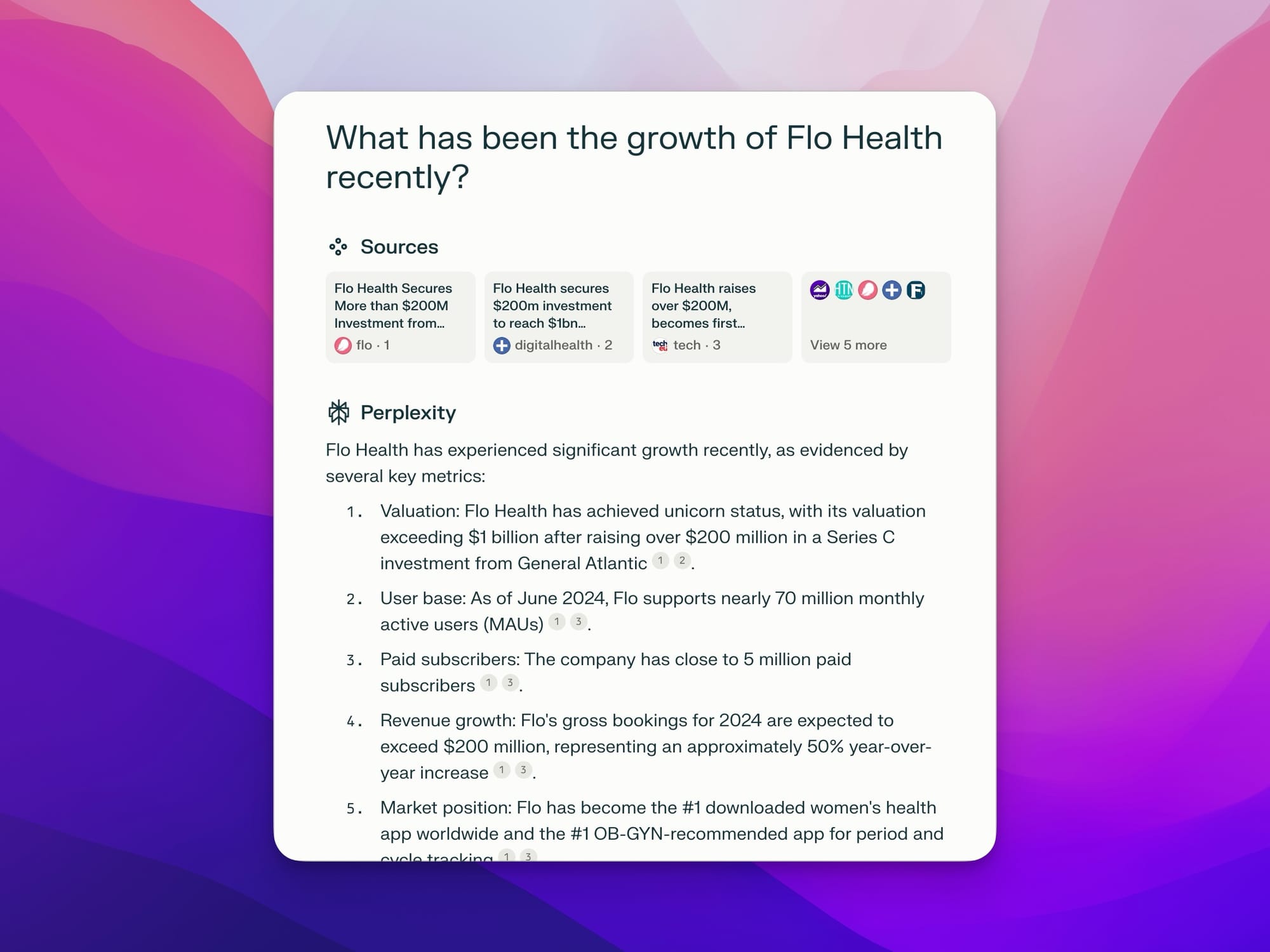
Every interaction is an opportunity to enhance perceptions.
Coming from a service design background, this is a mindset which I'm trained with: to think of everything in terms of a journey. What's the front stage journey? What's the backstage journey? If we look at a meeting in terms of a journey, there is a pre-meeting journey, and a post-meeting journey. And in that regard, once we're done with the meeting, I usually end it with some footnotes from the conversation, and reference some links from the discussion. I could have just ended the interaction with the meeting, but with this mindset of a 'journey', it's helpful to think through the entire experience of the interviewee as the user.
Hyperlinked resumes.
While sticking to conventions when it comes to a resume format, the downside here is that the output looks very vanilla. All of us, following the same format, looking to stand out in the sea of applications, how do we do it? One technique through which I've been able to creatively experiment, while continuing to stick to conventions is by using hyperlinks in my resume. If I've a body of work which is online, and that I can link to, I do. In this way, the hiring manager can read concisely and expand on any of the links if they choose to do so. Hyperlink provides this affordance.
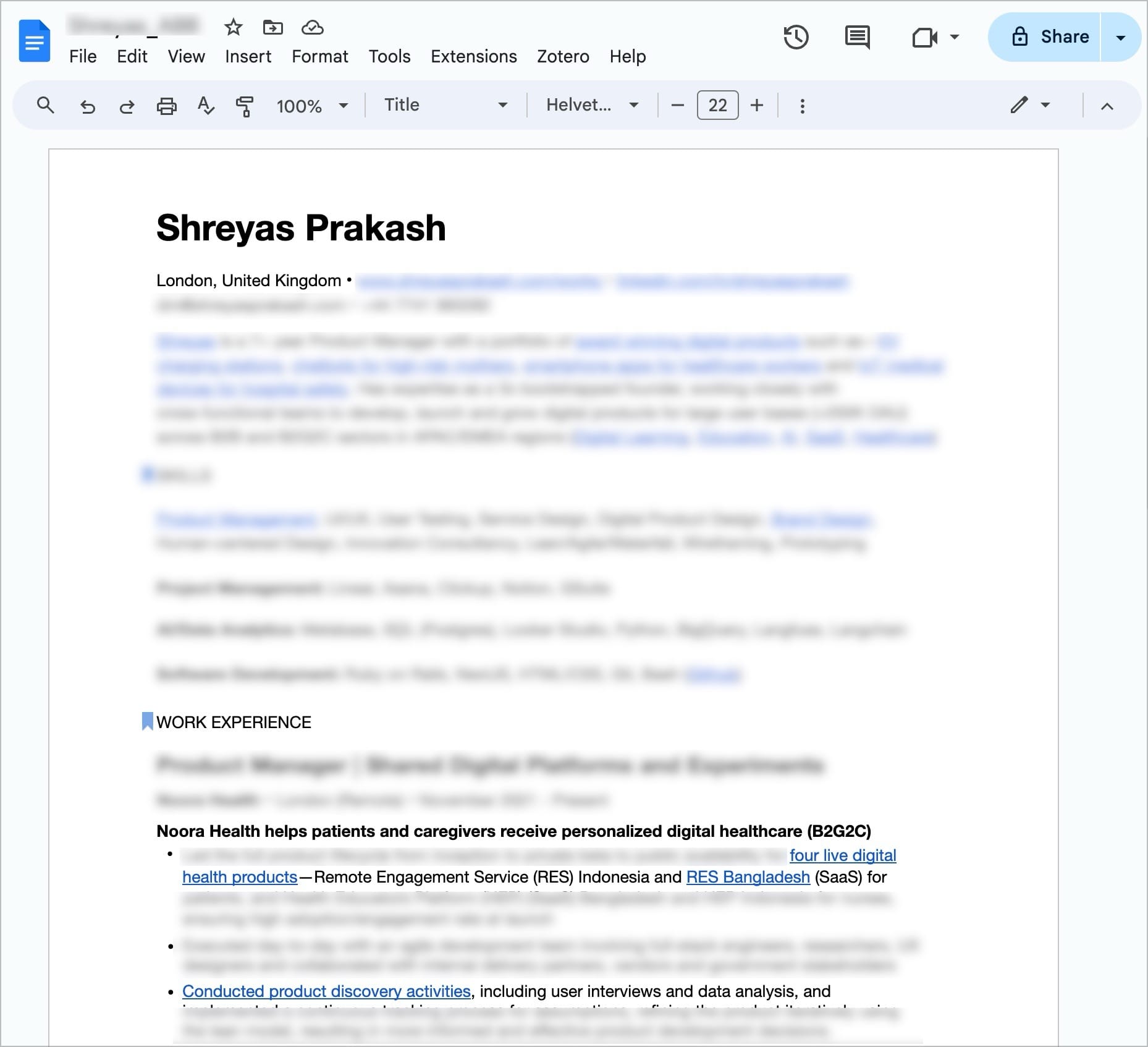
A professional headshot.
The display picture needs to have a 'professional' vibe. It's not for a dating profile, it should just look nice. Nowadays, you have AI options such as headshot pro etc which do a great job of getting close to a professional headshot (and still look real and not AI generated). Headshot AI does a great job at this.
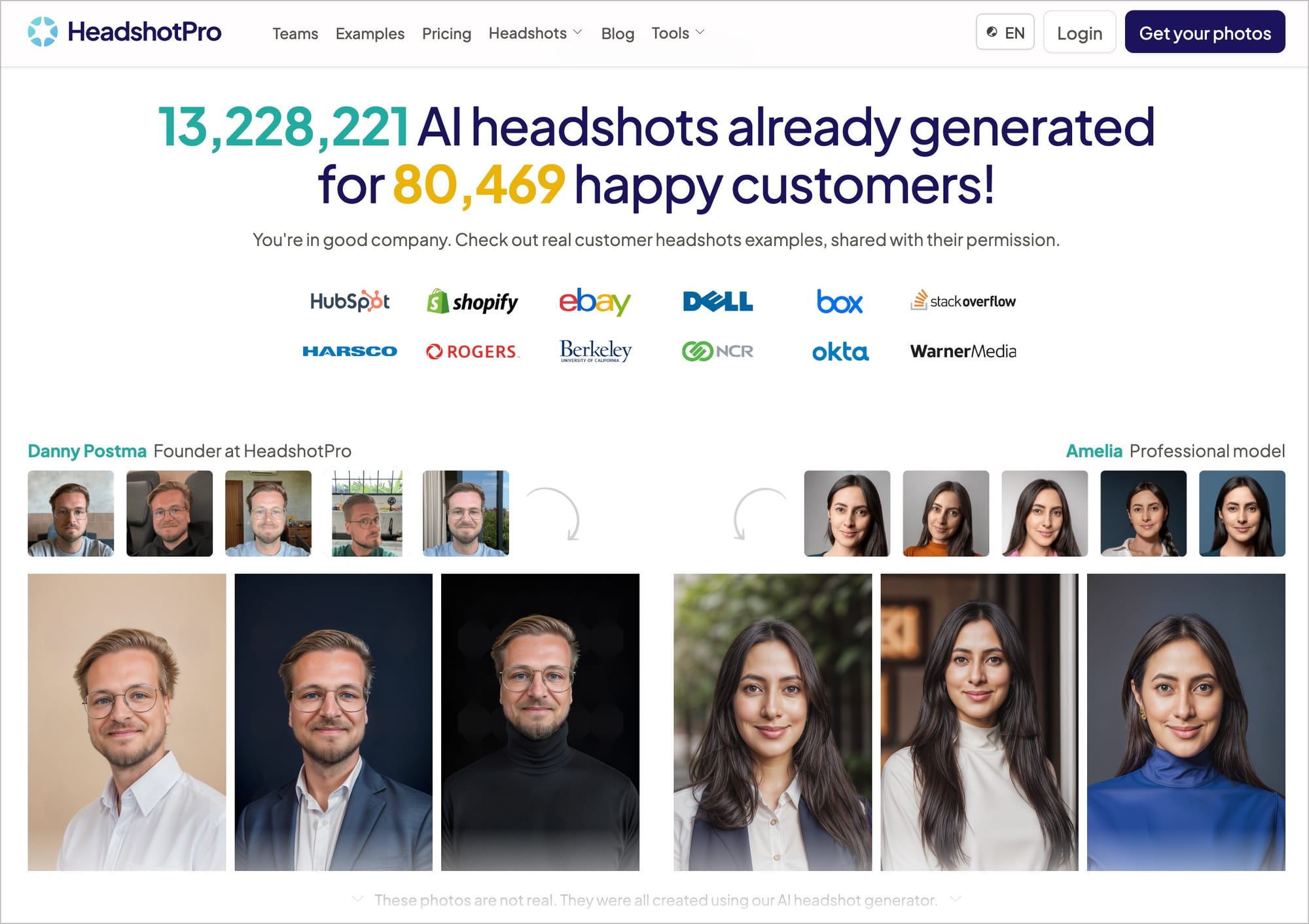
Non obvious networking.
When it comes to networking, I'd earlier made a mistake of applying filters such as target market, industry etc while seeking events and initiatives that would be a good investment of time. Marketing managers would come to marketing conferences, product managers come for product conferences, right? Right. My spicy take here is that this might be problematic since it would only filter out folks who are networking for the sake of networking. There are various other kinds of gathering structures which brings people together craving for certain kinds of experiences. Imagine heading to a meetup for folks who found an obscure research paper interesting. Non obvious networking is the way of the universe, were serendipity does its thing.
I think “wouldn't it be great if I knew people also designing interfaces for language models”, or “I wish I could explore web animation with people also trying to learn it”, or “Jesus, this Bruno Latour paper is wild, who can I talk to about this??”
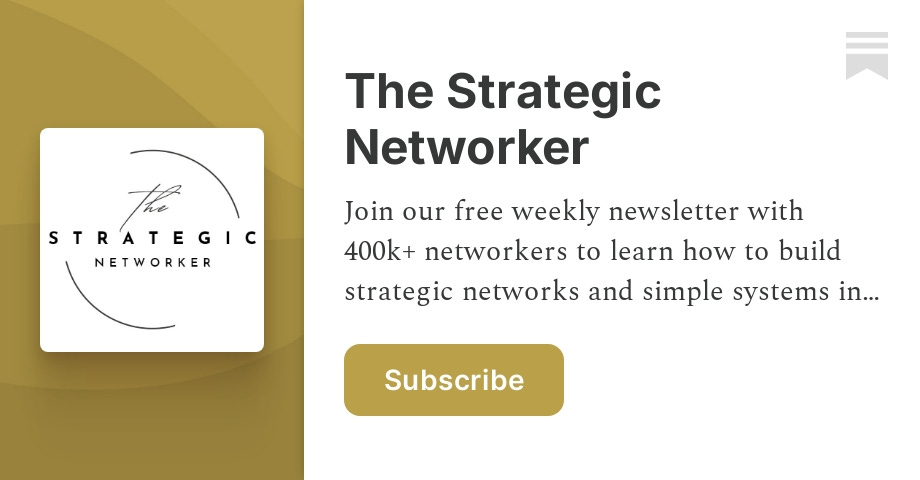
Highly recommend this substack that shares tips and tricks to approach networking strategically
Connecting with hiring managers, talent acquisition leads on Linkedin.
I've also seen more screening calls from TA leads especially when I've been more proactive on Linkedin, sending them personalised invites where I add some more context as to why I'm connecting with them. Even when my connection requests have not been accepted, I've seen better results with the resumes getting more noticed. If we follow the marketing rule of five, a person needs to have atleast five interactions to help convince and trust themselves to make a bold move. From this principle's point of view, even if they don't accept your Linkedin invite, it might atleast create an impression. And any impression is good for us. Tools such as The Org, come in handy to understand the who's who of a certain company before sending personalised invites (I'd also established an etiquette in which I was following a person for a while before sending personalised invites as that felt more warm)
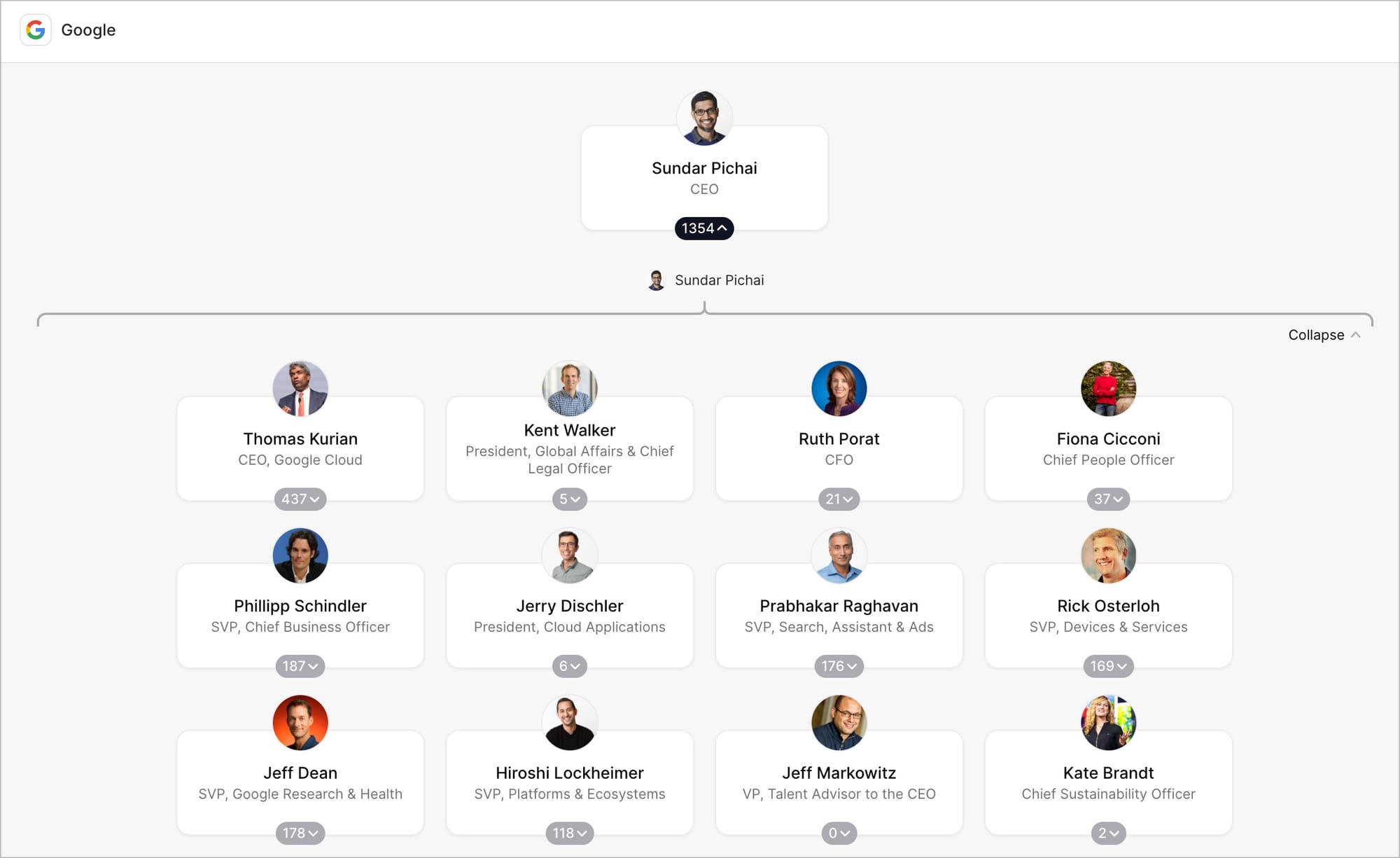
Linkedin location should be based on your location of interest.
If you do it differently, you might not receive as many inbound requests from recruiters from your target location.
To not keep 'Open to Work' visible.
The conventional take here is that by keeping this visible, you will have more inbound requests of hiring managers from various companies. In an employer-driven job market, the chances of this happening are really low. Do not put the ‘Open for new roles’ tagline on Linkedin. It might give a subtle hint that you’re for sale in the market of jobs, don’t prioritise yourself in this cheap fashion. There is still this unwritten rule (for good, or for bad) that the best candidates are not actively seeking new roles
Networking events might usually be a big waste of time and energy.
I’m totally against this concept of forced curations to ‘network’ and prefer more organic approaches. Having said that, there are certain approaches which have helped me get more impressions. The recruiters who were initially not accepting my Linkedin invite, started accepting because I knew someone who knew someone… This was a funnel. The more people I knew, the more people I could connect from the location, and the more people I could connect…Especially when we're in a new country, and forging connections all on our own, having the right connections would signal trust to the recruiter.
Communicate ‘excitement’ to the recruiters.
You are probably the 1000th person who is mentioning that you are the right person destined to do this role. The chosen one. Communicate your excitement on the introductory emails. Transfer your vibe. Get them excited to talk, and not to convince (please don't send your resume during your first interaction)
Avoiding ChatGPT words.
If you judge the dataset of 50,000 ChatGPT responses, it has an overwhelming preference for a certain set of words. 'Delve' is a top contender with a lot more papers that have been found recently to have used 'delve'.

More than some of these common AI words, one should also pay attention to the common ChatGPT phrases. The top contenders are:
- It is important to note that..
- In this article..
- Master the art of..
- In summary..
- A tapestry of..
- Delve into..
- Embark on a journey..
- A treasure trove of..
- When it comes to..
- In the annals of..
- In the realm of..
"We will guide you through the rich tapestry of Japanese culture...".
Some phrases just smell like they have been written by GPT. GPT systems might be getting increasingly intelligent, but they wouldn’t still pass the smell test. You just know that it’s written by GPT no matter how hard you try. It's important to 'blacklist' such phrases to humanize our writing for job applications.

Database of swipe files.
Whenever I receive responses to uniquely drafted cold mails, warm mails, intros etc, I document them and compile it into a single place as a database of swipe files. I would have ‘Copy That Worked’ that I can remix and reuse wherever I need. Nothing is original in the world. Having such a list of swipe files makes it easier to write a first draft saving 10-15 minutes in the cold start problem.
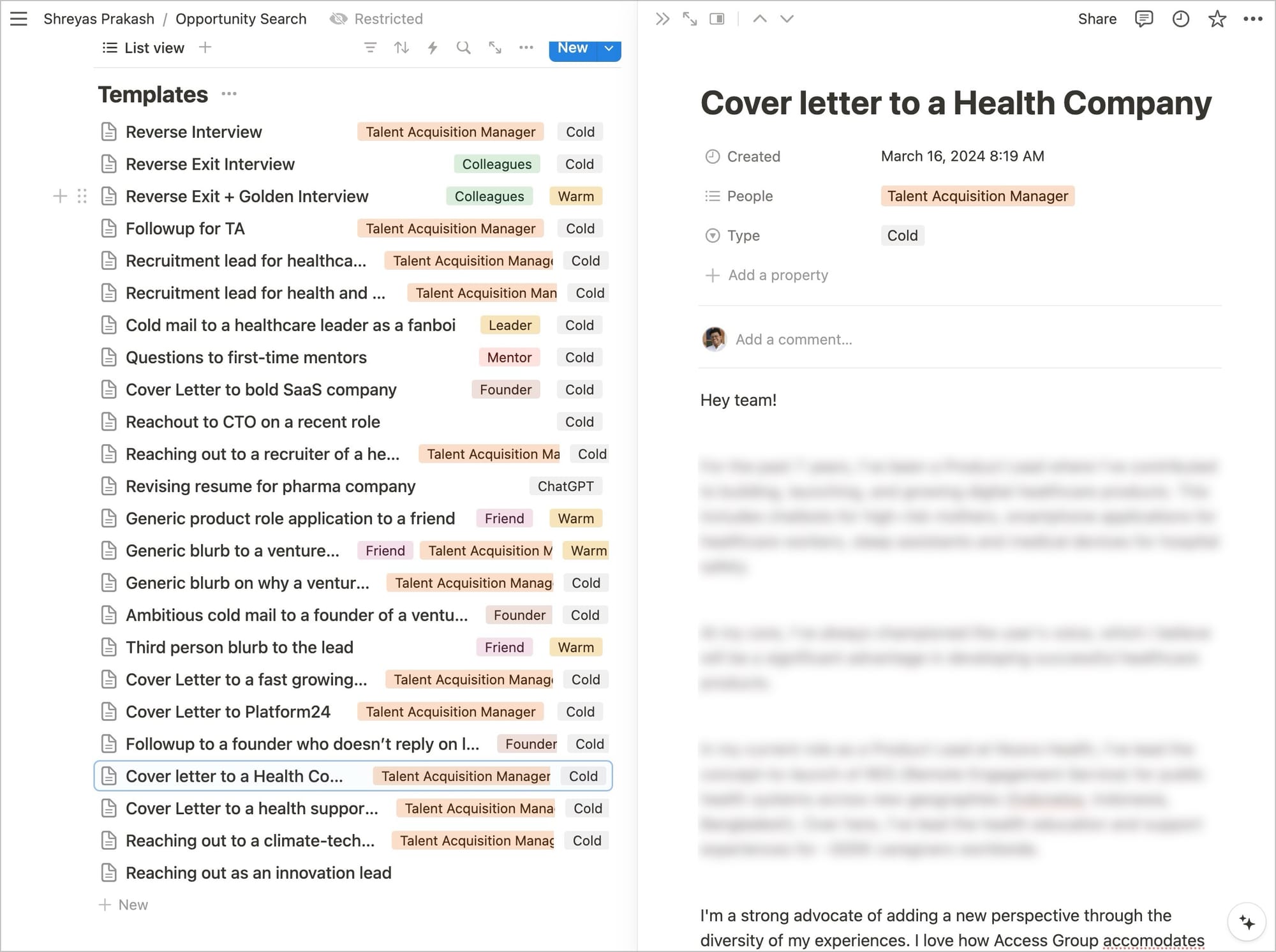
Make your Mnookin Two Pager.
While searching for opportunities, it's equally important to search for opportunities that align closely to your values and growth plans. This helped me with my personal positioning

The exercise typically included:
Loves and Hates: Identifying what you love doing and what you dislike in your work environment.
Must-Haves and Must-Nots: Determining the essential elements you need in a job and the deal-breakers you want to avoid.
Perfect Job Description: Imagining and describing your ideal work situation.
Cultural Fit: Reflecting on the type of company culture where you would thrive
Mnookin Two Pager reference guide shared as a part of the Job Search Council community
Join Job Search Council
This is a collaborative support group designed for individuals actively seeking employment. After signing up, participants are matched with a small group of 4-6 peers. A volunteer moderator, also a job seeker, facilitates the meetings using structured tools and templates to guide discussions and support members in their job searches.
This was personally very transformational, as I found a close circle where I could be more vulnerable.

Candidate Market Fit.
This was also a helpful exercise which I did as a part of the JSC. A candidate-market fit statement is a concise description of your ideal job role, taking into account your skills, preferences, and market realities. It's similar to a product vision statement but focused on your career.
Here's a template you can use:"I am seeking a [specific role] position in a [company size/type] that [key characteristic]. I bring [your top skills/experiences] and am looking to [your goals/impact]. My ideal work environment is [culture/values]."
For example — "I am seeking a Product Manager position in a fast-growing tech startup focused on AI applications. I bring 5+ years of experience in agile development and data analytics, and am looking to lead innovative product launches. My ideal work environment encourages creativity and rapid iteration."
ADPList for talking to folks your Dream 100 List.
I had a continuous discovery process, where I have weekly discovery calls with team members from dream companies, helping me uncover various insights surrounding the company, helping me give a good sense of 'flavour' of the company and culture. Just like how you conduct continuous discovery calls for your product to understand the user better, in this case, you were the product. This framing helped me use the product perspective in the job search process. I approached career like customer discovery: I started small, found what I was good at, and leveraged it for more target reachouts. Did not assume to know what I want, or what I'm good at, from the start.
Repositioning through Linkedin
Initially, I was applying for senior product manager roles in London and I wasn’t landing any jobs which led me to evaluate my positioning again. I tried to get a mental picture of other Senior Product Managers at similar companies and look at their growth trajectory on Linkedin. This helped me understand that I needed a longer experience band, leading me to reposition my Linkedin narrative to fit the role of a Product Manager, instead. This helped me get more conversions in the funnel. As Nigel Cross, the design theorist put it, the problem and the solution was co-evolving with each other.
Reduce the variables
While you're applying, you might be seeking a shift from your current role. It might be a domain shift (say, from healthcare to academic publishing). A position shift (from manager, to senior manager). Or even a location shift (say, from Bangalore to London). To have a better candidate-market fit, I knew that it would be better to reduce the variables here. If I was seeking a position shift, a location shift as well as a domain shift at the same time, It might be nearly impossible to land conversions. So, I reduced the variables to define the scope better.
Footnotes after every interview round
I usually send footnotes after every interview round consisting of links which are relevant, sidenotes which I couldn't highlight during the conversation, as well as relevant work samples. Every interaction is an opportunity for us to make it memorable.
Informational interviews with 2nd/3rd degree connections
Linkedin premium comes in handy to selectively filter out 2nd degree / 3rd degree connections. I was able to do informational interviews with such connections that helped me gain more context in the interviews. It's also a great way to do a 'vibe check'. Studies also show that weak links are also more likely to recommend you for a role compared to a strong link.
Managing your serotonin levels
Applying for a job is very different from the act of purchasing a car. You induce serotonins when you apply for newer opportunities, whereas, in case of a car purchase, you get more dopamine hits as you explore different car models, different specs etc. I tried to attach less of my self-worth towards the outcome of an opportunity, and rather seek for meaning and purpose outside, and across other channels, that included running clubs, book reading circles, etc.
Keep your links handy
While cross referencing your body of work during a live interview, I create keyboard snippets using Raycast extension so that I could easily paste a link on the meeting chat window. Imagine if the discussion is around diversity of work, and you pull up a blog on the same topic which you had written five years back, and put that up on the chat within 2 seconds.
Raycast allows you that agility.
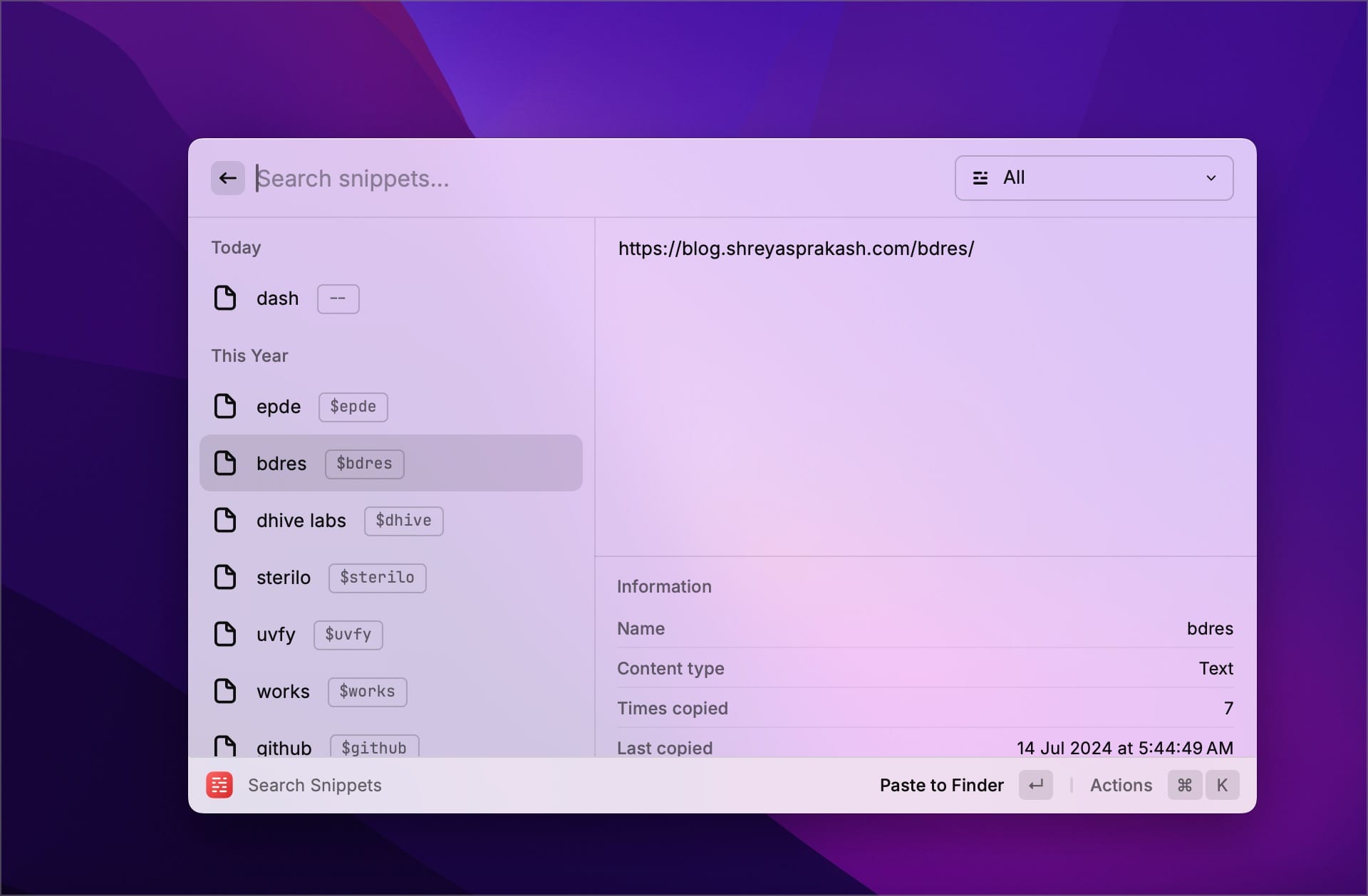
Proof of work
Documenting all my previous experiences in an engaging storytelling way, while also balancing the expectations and needs of the hiring manager (potentially?) reading it. Also proof of merit: documenting the credibility of my previous work in the form of Linkedin testimonials etc.
Hiring Manager safari
This is a framework I use is to do some housekeeping before applying for a role. This concept is borrowed from the service design discipline to think through: What would they do first, what would they do next?
The idea is to branch out all possibilities of interactions and map them accordingly.


A thorough read on the process of service safari. This is an approach one could adopt while navigating the complexities of the job search process
You are prototyping the user journey in your mind to make sure that you cover all the use cases. While doing this exercise I noticed that my GitHub was not sanitised and had a lot of junk which I then cleaned up adding more comprehensive README files. Helped me with a lot of sanity checks.
What are the job boards saying?
I also take a look into the employee reviews on Glassdoor to make a judgement of the company. There might be still some apprehensions around Glassdoor, so I also triangulate my insights from other anonymous sources of information (Reddit etc)
Bulk hiring companies.
Some companies might also be bulk hiring at any given moment. It might be a new team addition, or a new funding round which leads them to this direction. This also serves as a great opportunity for us, as candidates to apply cross-laterally. In my previous role, I'd applied originally for a service design position, and then ended up getting hired as a product manager. When the company is going through a window of bulk-hiring, it's possible to get transferred quickly to other matching roles due to the availability.
Talking about screening calls..
Expect to receive a call out of nowhere, and in most cases it’s by design as the hiring manager wants to gauge your impromptu responses. I usually start with.. ‘Hello, Shreyas here' as a default response. I also ensure the ‘how are you doing?’ is responded to with detail instead of an ‘I’m fine’ response.
Seeking referrals should not be an ad-hoc strategy
Seeking referrals should not be based on new companies hiring at the moment. It’s should be a repeatable ritual where we continuously make more connections. As James clear mentions—We don’t rise to the level of your goals, but fall to the level of our systems.
Figure out your tooling.
It's a good time to equip ourselves with some job search tooling. Outside of paying for Linkedin, these are some of the tools I use:
- Trello — Keeping a track of companies applied to
- Google docs — Keeping a track of resumes and cover letters (I created a separate google account for this purpose)
- iCloud — Dedicated folders for each application to hold my cover letter, job description, and resume
- Roam Research — This was used for collecting interview notes
- ChatGPT — Mainly for interview preparation, refining resume bullet points based on keywords etc.
- Otta — Good quality of curated jobs
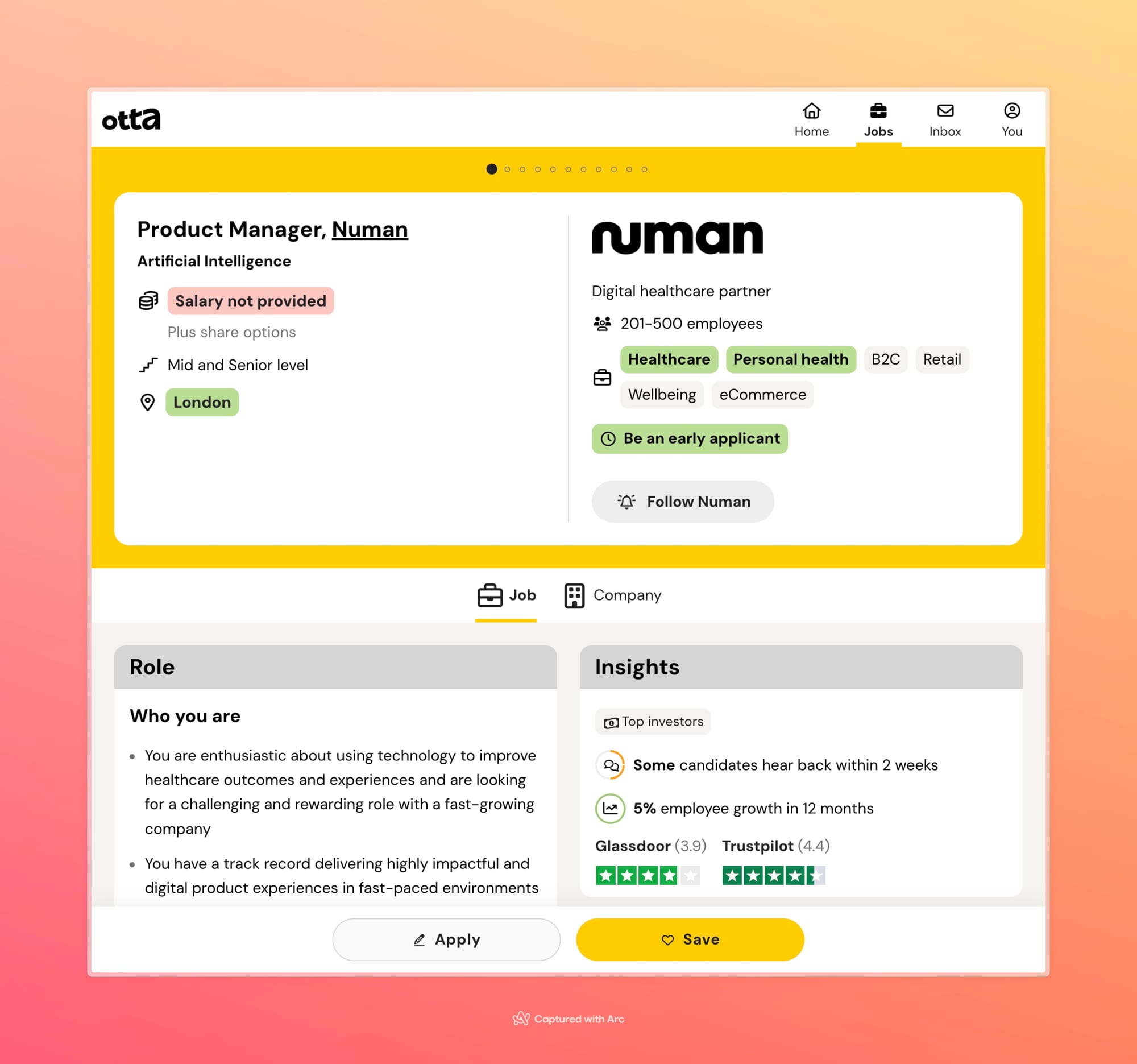
Iterating between volume first and quality first applications.
In the first phase of applying, I followed a volume first approach--applying to 10+ places a day, tailoring my resume based on ATS systems, and hoping to land an interview. On the other side, I also tried the tailored approach sending 5-10 applications per week that you're uniquely suited for. I tried the volume first approach for ~3 weeks, got burnt out, then pivoted to a quality first approach, and got burnt out this way too. I resorted to an approach that fit well with my momentum and energy, and just kept going at it.
Monthly status updates to mentors.
As I continued to make more connections during the process, I also kept them in the loop while making progress. The content was ~30 seconds to read, and kept it brief to three bullet points on (a) the companies I'm interviewing, (b) companies I would need an introduction to, and (c) a way in which the mentor can help. More times than you might imagine, you might get a hit. Someone could put in a word or might know someone that had a connection.
The ChatGPT magic command.
Whenever I'm less satisfied with my writing draft, I run it through the 'magic command' on ChatGPT to get a better version. It's so simple that I don't even have to remember the prompt so much. I just type 'Refine this... (paragraph)', and let ChatGPT do it's magic.
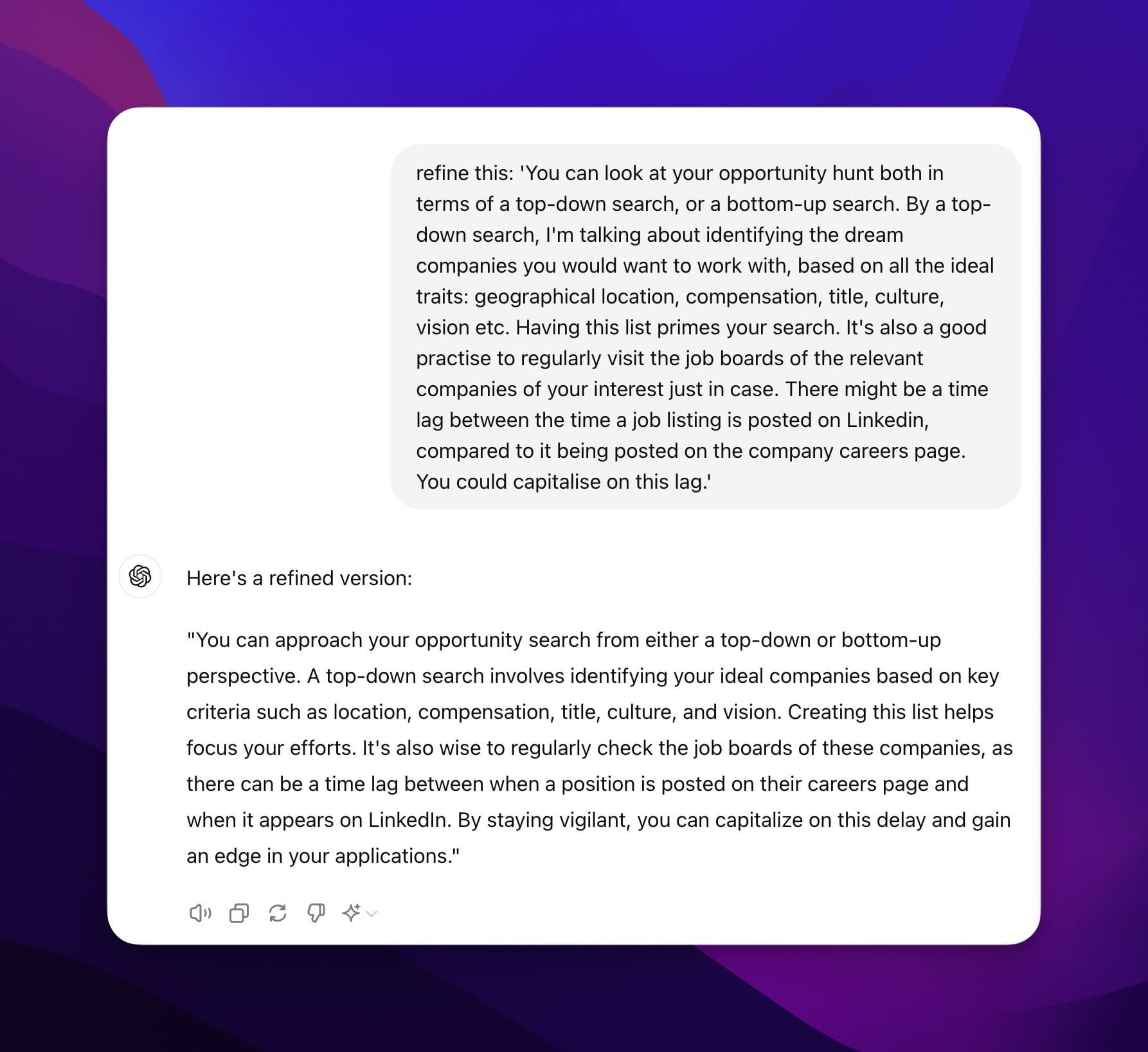
Mindset grooming
They are not looking for the best candidate, they are looking for a fit. If you match, you win. Think of this like Pokémon cards. There is no best card. They are just looking for a square peg that fits into a square hole. The second is an important aspect, almost a mantra which I keep reminding myself that a rejection is not a failure, it’s an opportunity to learn. Might sound cliche, and it’s still an important lesson to reinforce.
Multiple narratives across Linkedin and CV.
When considering the recruiter or talent acquisition lead's journey, it’s important to recognize the frequent context switching they do between your CV, LinkedIn profile, personal websites, and more. To enhance these key touchpoints, I've tailored my narratives differently across platforms. On LinkedIn, I’ve crafted a more story-driven narrative, focusing on achievements while strategically incorporating relevant keywords. In contrast, my CV adheres to conventional guidelines, presenting a more formal and concise overview. Providing varied perspectives can be advantageous. I've observed individuals who effectively use two distinct formats: a reverse chronological summary of work and impact on their CV, and a hero's journey narrative on LinkedIn. This dual approach gives recruiters additional data points to form a well-rounded impression of the candidate. In short, LinkedIn offers an opportunity to showcase more personality, while the CV remains grounded in convention.
Never use ChatGPT for your cover letter draft.
The best way to write a cover letter is to write your first draft in one go without doing any copy+paste. You should communicate your excitement and motivation in as less lines as possible. One or two paragraphs conveying this essence would do. This can then be refined further with other LLM tools if necessary.

.@dhh received 2,000 applicants for a job at @37signals
— Andrey Azimov (@AndreyAzimov) September 7, 2024
Many of them used AI to write their cover letters.
And unfortunately for them, it was the same AI output for most of them.
It used the same phrases.
Applicants probably just opened ChatGPT and asked it to write a cover… https://t.co/0TBZw96309 pic.twitter.com/DKYgPAdBiU
Cover letters that use AI still smell like AI writing. It still has the slob smell and look.
Email signatures..
Signatures can be more personalized by including links to recent work. Inspired by researchers who showcase their latest papers in their signatures, I've been adding links to my own most recent projects. Including a professional headshot can further enhance the signature's impact. There's also room to experiment with other elements, making the signature a unique extension of one's professional brand.
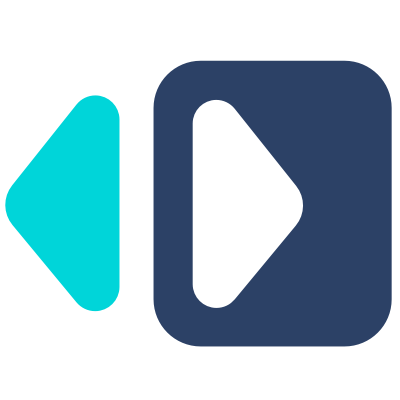
Website for creating unique email signatures
Preparing an FAQ
I also took some time to prepare a set of anticipatory questions. I verbally prototyped on them and gradually refined the answers as I started using them in various occasions. Putting them in writing helped clarify my thinking. These were some of the anrticipatory questions I prepared, yours could be a bit different.
- What are your favourite technologies?
- What are some products that you love?
- What are your top product ideas?
- What are your values?
- What are your career goals over 3-5 years?
- What is your product management experience?
- What metrics would you use to evaluate a product’s success?
- How would you promote a new product?
- What are the biggest mistakes of your career?
- What are the biggest successes of your career?
- When did you face a conflict?
- What are your strengths and weaknesses?
Fin.

